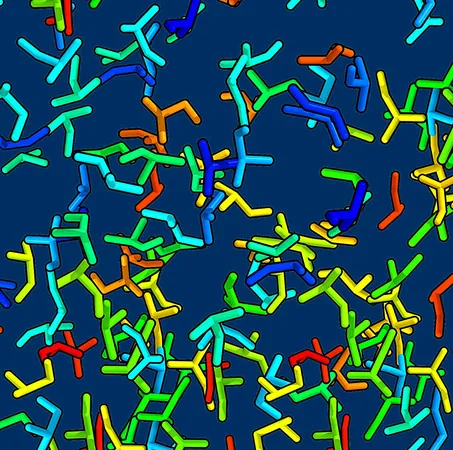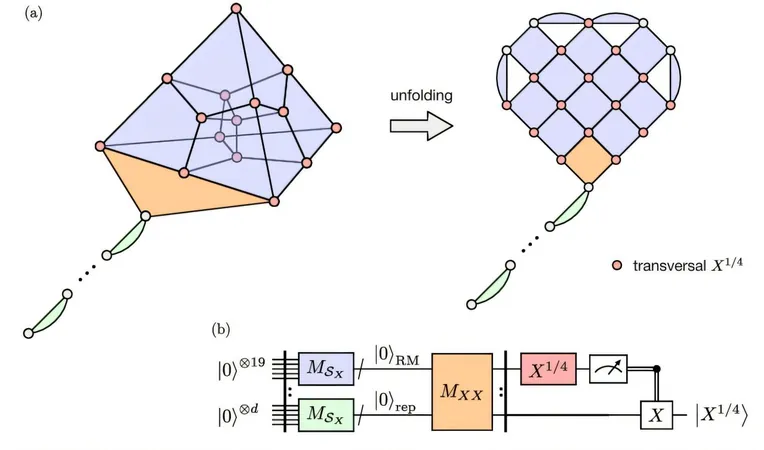
Unlocking the Secrets of Protein Design: How Machine Learning is Paving the Way
2025-07-23
Author: Nur
The New Frontier in Protein Engineering
In a realm teeming with natural proteins, scientists are boldly venturing into the uncharted territories of synthetic proteins—crafting them from scratch to unlock revolutionary functions in medicine and materials science. Welcome to the golden age of de novo protein design, where machine learning is driving a seismic shift in how we create these complex biological marvels.
The Power of Flexibility in Proteins
A defining trait of functional proteins is their structural flexibility—they wiggle, jiggle, and contort into shapes that allow them to perform their roles with astonishing efficiency. Yet, many of today’s synthetic designs fall short of capturing this crucial characteristic.
Pioneering Research from Heidelberg and Max Planck
Researchers from the Heidelberg Institute for Theoretical Studies (HITS) and the Max Planck Institute for Polymer Research (MPIP) are on a mission to change this narrative. At the recent International Conference on Machine Learning (ICML) held in Vancouver, they unveiled groundbreaking research aimed at creating proteins with tailored flexibility.
Building Models for Tomorrow's Proteins
First author Vsevolod Viliuga (MPIP) expressed the project’s ambition: "We set out to develop a model that generates proteins whose structures exhibit custom flexibility at specified locations." Their innovative framework harmonizes a neural network that predicts protein backbone flexibility with an advanced generative model.
Mimicking Nature's Flexibility
Co-author Leif Seute (HITS) emphasizes the natural prowess of proteins: "The effectiveness of natural proteins largely stems from their adaptability. Now, we can design novel proteins that replicate this essential trait." Their approach extends the Geometric Algebra Flow Matching (GAFL) model established the prior year, which operates three times faster than competing models and yields designs strikingly similar to natural proteins.
A Leap Towards Functionality
The results are promising. The team demonstrated their model's capability to generate proteins exhibiting desired flexibility patterns, even in configurations that deviate from what occurs in nature. Team leader Frauke Gräter (MPIP) sums it up: "Our findings mark a pivotal advance in creating new proteins tailored for applications demanding flexibility, like enzyme catalysts."
Towards a Sustainable Future
This pioneering approach not only stands to transform therapeutic development but also addresses pressing sustainability challenges, such as plastic degradation. As machine learning continues to evolve, the possibilities for protein design—equipped with the flexibility of their natural counterparts—are limitless.



 Brasil (PT)
Brasil (PT)
 Canada (EN)
Canada (EN)
 Chile (ES)
Chile (ES)
 Česko (CS)
Česko (CS)
 대한민국 (KO)
대한민국 (KO)
 España (ES)
España (ES)
 France (FR)
France (FR)
 Hong Kong (EN)
Hong Kong (EN)
 Italia (IT)
Italia (IT)
 日本 (JA)
日本 (JA)
 Magyarország (HU)
Magyarország (HU)
 Norge (NO)
Norge (NO)
 Polska (PL)
Polska (PL)
 Schweiz (DE)
Schweiz (DE)
 Singapore (EN)
Singapore (EN)
 Sverige (SV)
Sverige (SV)
 Suomi (FI)
Suomi (FI)
 Türkiye (TR)
Türkiye (TR)
 الإمارات العربية المتحدة (AR)
الإمارات العربية المتحدة (AR)